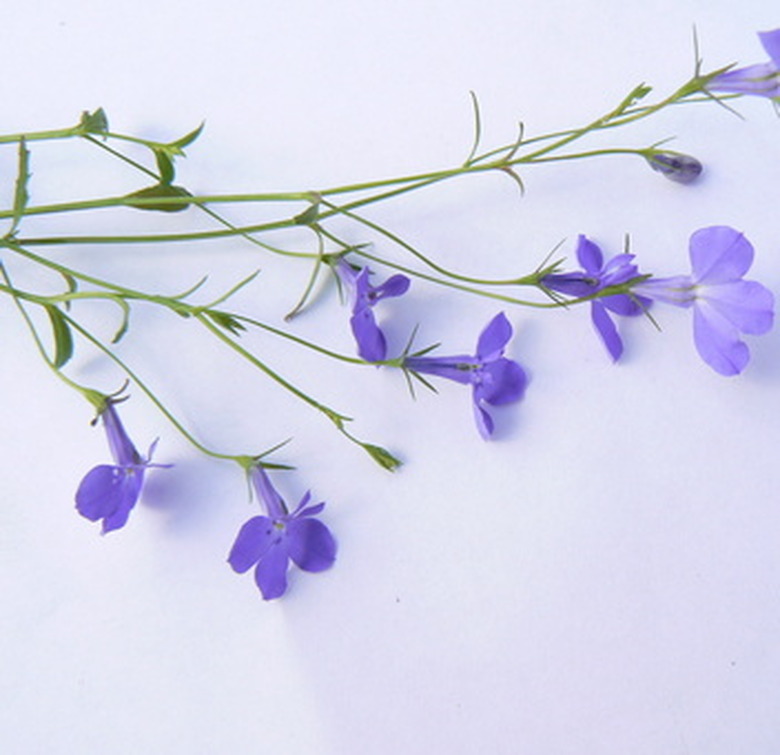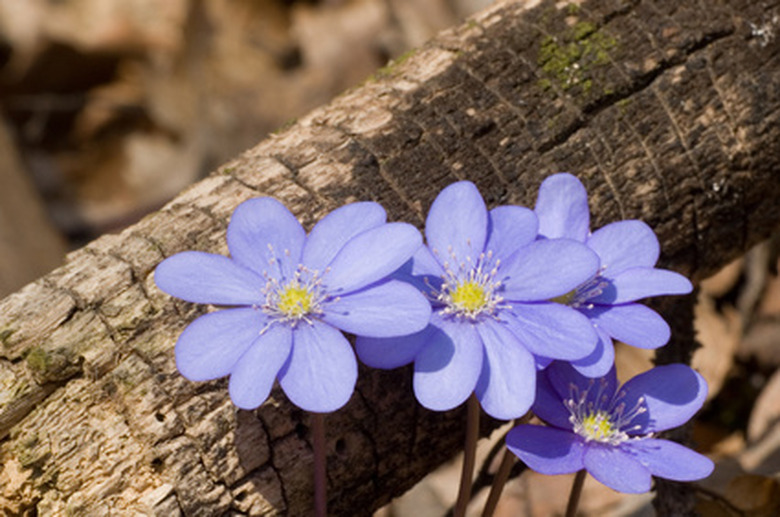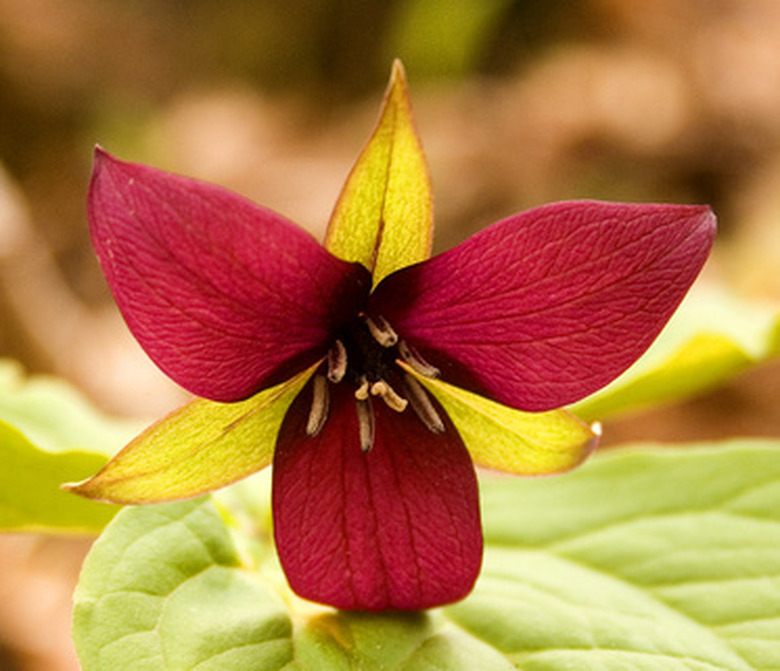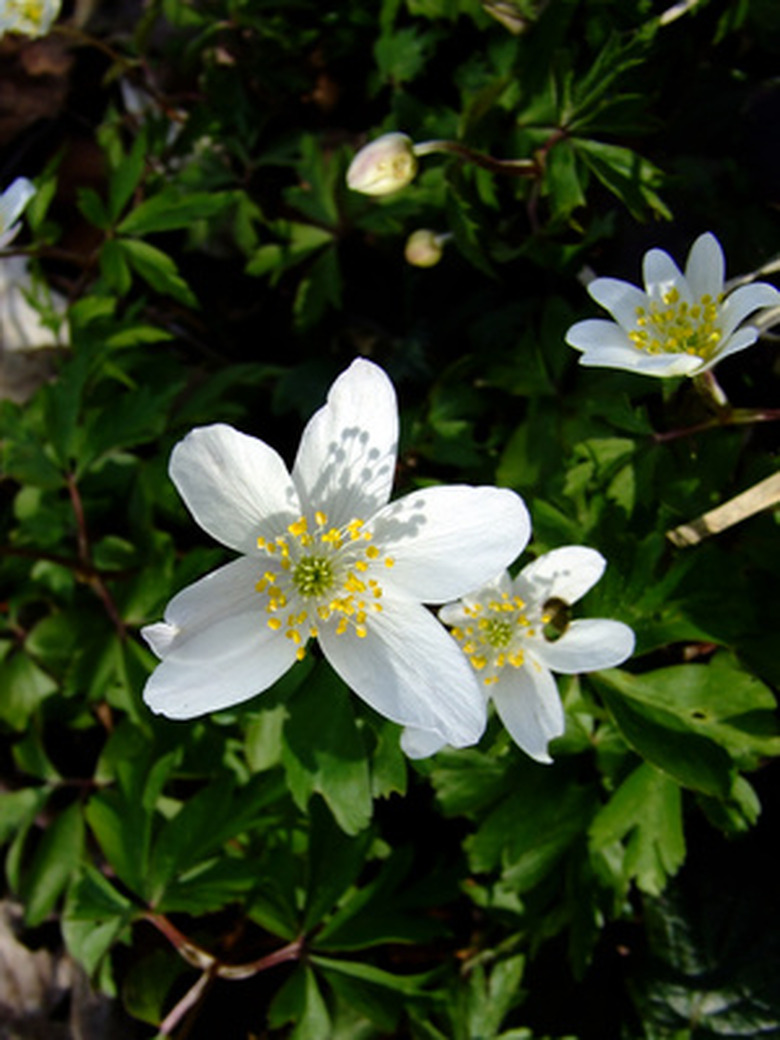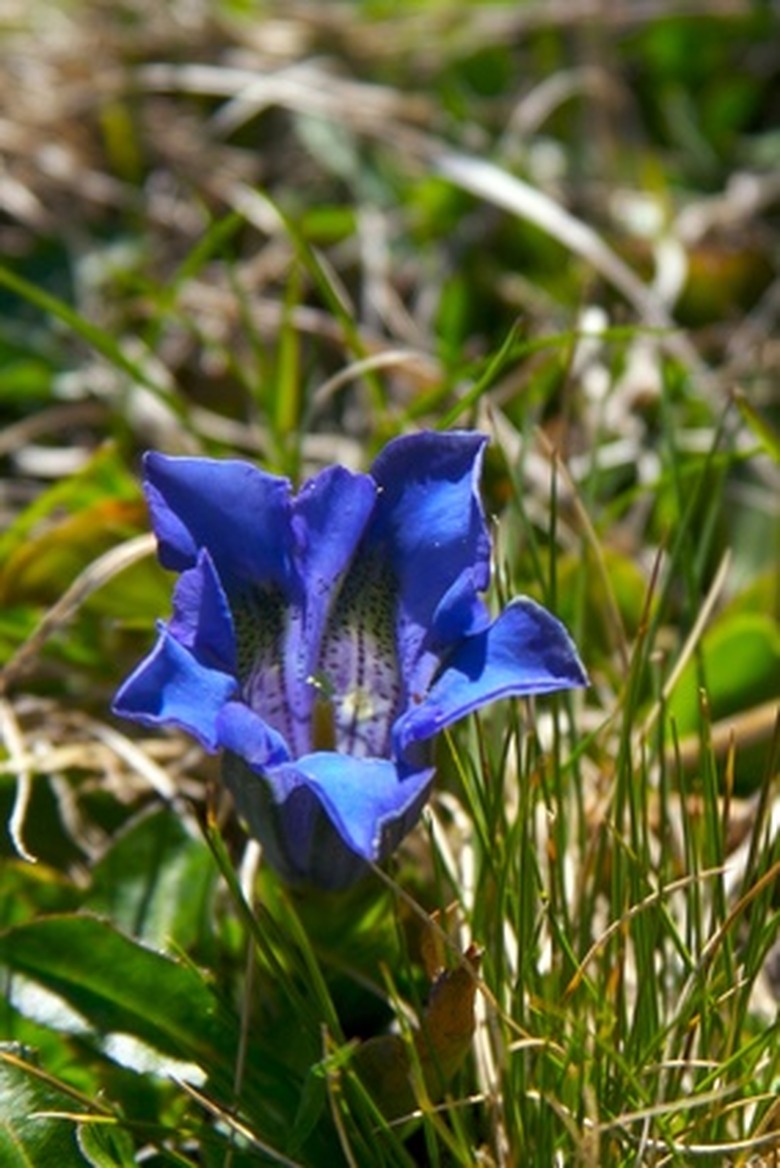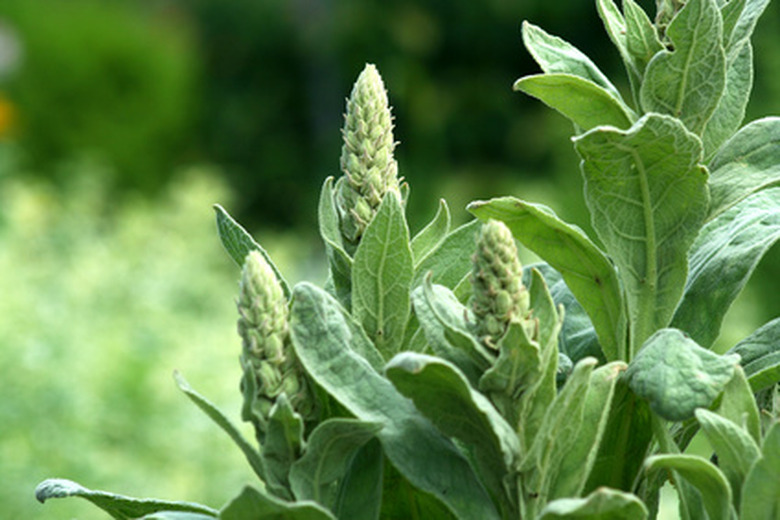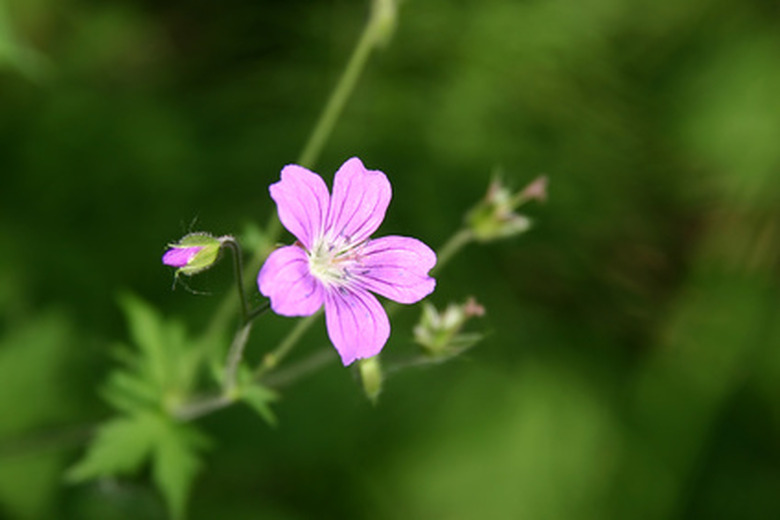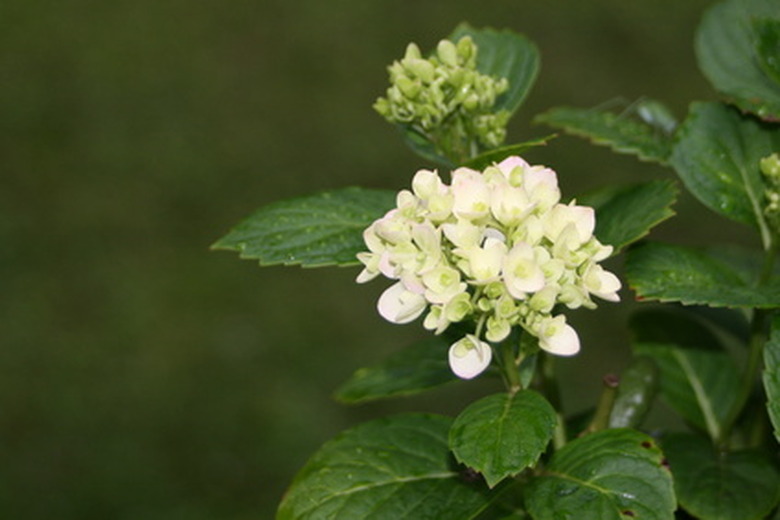The Native Flowers Of Georgia
According to the Georgia Native Plant Society, Georgia has 78 different types of native plants. Approximately 44 of Georgia's native plants are flowers; the rest of Georgia's plants include trees and shrubs. The most common colors of native Georgia flowers are blue, pink, white and yellow. Native flowers in Georgia bloom at different times of the year, as some bloom in the spring and summer, and others bloom in the winter.
Step 1
The birdfoot violet (Viola pedata) flower is also known as the crowfoot and pansy violet flower. The birdfoot violet plant grows between three to six inches in height, and the flower grows up to 1.5 inches in width. The flowers are purple to white in color with yellow stamens; the leaves are dark green and long in shape. This flower grows well, away from other plants and blooms, from spring to summer. Areas in Georgia where the birdfoot violet is found include glades, prairies, roadsides, slopes and woods.
Step 2
Downy Lobelia
Step 1
The Downy Lobelia (Lobelia puberula) flower grows between 12 to 18 inches in height and is purple to white. The flowers have three large petals and two small petals, placed opposite each other. The downy lobelia flower has small leaves which are hairy on one side. Areas in Georgia where this flower grows includes swamps, meadows and moist open grounds.
Step 2
- The birdfoot violet (Viola pedata) flower is also known as the crowfoot and pansy violet flower.
- The birdfoot violet plant grows between three to six inches in height, and the flower grows up to 1.5 inches in width.
Hepatica
Step 1
The Hepatica (Hepatica americana) flower grows from to six to nine inches in height. The flower is shaped like a star and is colored white, lavender and blue. The leaves turn a burgundy color during the winter. The hepatica blooms from winter to spring. Places in Georgia where the hepatica is found include moist rocky slopes and mossy banks.
Rose Trillium
Step 1
The Rose Trillium (Trillium catesbaei) flower grows up to 1.5 inches in height. This flower grows in two different colors, pink and white. It has three petals which curl down at the ends and three green leaves just below the flower. This flower is found near streams, and upland and underneath ericaceous plants; it grows from spring to summer.
Step 2
- The Hepatica (Hepatica americana) flower grows from to six to nine inches in height.
- The flower is shaped like a star and is colored white, lavender and blue.
Rue Anemone
Step 1
The Rue Anemone (Thalictrum thalictroides) flower grows between four to nine inches in height. This flower is pale pink or white with yellow stamens and has between five and 10 petals. The green leaves on this flower grow in large groups. Areas in Georgia where this flower is found include shady ridges and wooded slopes. The Rue Anemone flower blooms from winter to spring.
Soapwort Gentian
Step 1
The Soapwort Gentian (Gentiana saponaria) flower grows between six to 12 inches in height. It is deep bluish purple in color. The soapwort's green leaves are pointy and tube-shaped. The types of areas where this flower is found in Georgia include moist meadows, ditches and slopes. This flower blooms in the fall.
Step 2
- The Rue Anemone (Thalictrum thalictroides) flower grows between four to nine inches in height.
- The Rue Anemone flower blooms from winter to spring.
White Milkweed
Step 1
The White Milkweed (Asclepias variegata) flower grows up to 18 inches in height. Its small white flowers grow in clusters, and each flower has four rounded white petals. The white milkweed stamens are colored white and purple, and the milkweed leaves are large, green and pointed. The white milkweed flower is toxic and can cause irritations to a person's skin. Areas in Georgia where this flower is found include sunny, dry, sandy areas; roadsides and wooded areas. The white milkweed blooms spring to summer.

